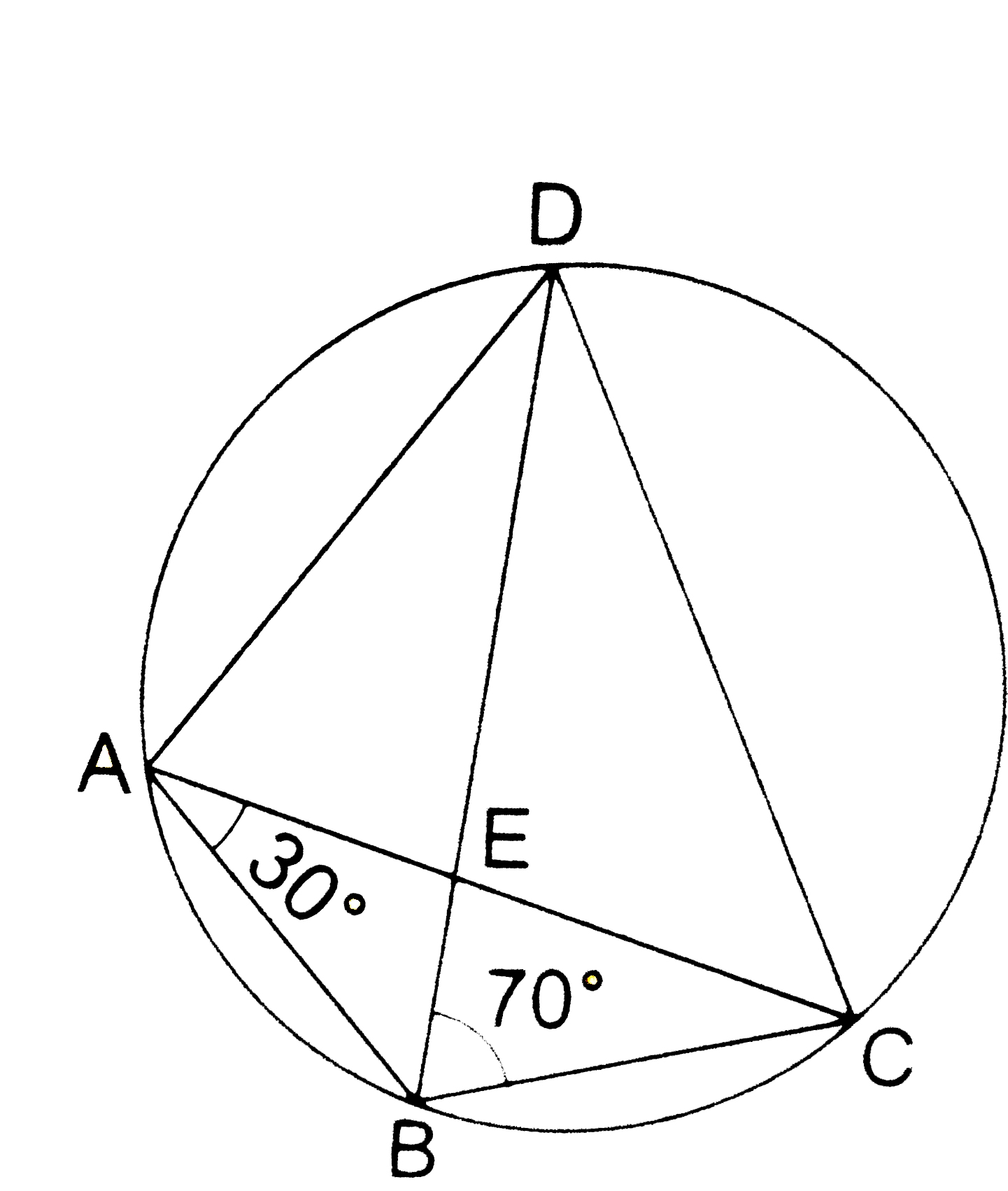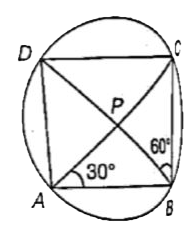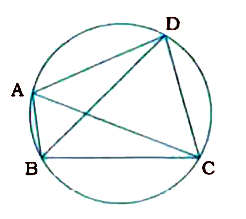In the given figure, ABCD is a cyclic quadrilateral whose diagonals intersect at a point E. If ∠DBC=70∘ and ∠BAC=30∘ , find ∠BCD . Further, if AB = BC , find ∠ECD

Video Solution
Text Solution
We have
∠BDC=∠BAC=30∘ [angles in the same segment ]
Now , in ΔBCD , have
∠DBC+∠BCD+∠BDC=180∘
[∵ sum of the angles of a Δ is 180∘ ]
⇒70∘+∠BCD+30∘=180∘
⇒∠BCD=180∘−100∘=80∘
Now,AB= BC ⇒∠BCA=∠BAC=30∘
∴∠ECD=∠BCD−∠BCA=80∘−30∘=50∘
|
Topper's Solved these Questions
- CIRCLES BOOK - RS AGGARWALCHAPTER - CIRCLES EXERCISE - Exercise 12A
22 Videos
- CIRCLES BOOK - RS AGGARWALCHAPTER - CIRCLES EXERCISE - EXERCISE 12B
18 Videos
- BAR GRAPH, HISTOGRAM AND FREQUENCY POLYGONBOOK - RS AGGARWALCHAPTER - BAR GRAPH, HISTOGRAM AND FREQUENCY POLYGONEXERCISE - EXERCISE 17B
16 Videos
- CONGRUENCE OF TRIANGLES AND INEQUALITIES IN A TRIANGLEBOOK - RS AGGARWALCHAPTER - CONGRUENCE OF TRIANGLES AND INEQUALITIES IN A TRIANGLEEXERCISE - Multiple Choice Questions (Mcq)
20 Videos
Similar Questions
Knowledge Check
ABCD is a cyclic quadrilateral whose diagonals intersect at P. If AB=BC,∠DBC=70∘and∠BAC=30∘, then the measure of ∠PCD is :
A35∘B50∘C55∘D30∘In the given figure, ABCD is a cyclic quadrilateral and diagonals D bisect each other at P. If ∠DBC=60∘and∠BAC=30∘, then ∠BCD is:
 A90∘B60∘C80∘Dnone of the above
A90∘B60∘C80∘Dnone of the aboveABCD is a cyclic quadrilateral whose diagonals intersect at P. If AB=BC,∠DBC=70∘and∠BAC=30∘, then the measure of ∠PCD is:
Aa) 50∘Bb) 35∘Cc) 55∘Dd) 30∘
In Figure, if ∠DBC=700 and ∠BAC=300, find ∠BCD. Further, if AB=BC, find ∠ECD
View SolutionIn Figure, ABCD is a cyclic quadrilateral. Find the value of x
View SolutionABCD is a cyclic quadrilateral whose diagonals intersect each other at point O. If ∠CAB=25∘ and ∠BCD=85∘ then find ∠CBD.
View SolutionIn the given figure ABCD is a cyclic quadrilateral in which AC and BD are its diagonals. If ∠DBC=55∘and∠BAC=45∘, find ∠BCD.

View SolutionIn the given figure, ABCD is a cyclic quadrilateral in which AE is drawn paralllel to CD and BA is produced to F. If ∠ABC=70∘ and ∠FAE=30∘, Find ∠BCD.
View Solution
